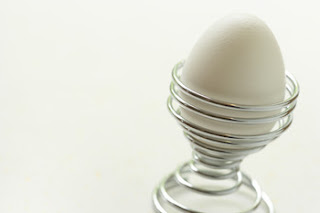Nifty "Eggs"periment from Dr. Ehrmantrout and Hawks Prairie Orthodontics
May 14th, 2009

Summer is drawing near. If the little ones aren’t going to camp, you may run out of ideas to keep them occupied. Why not use a fun and simple science experiment to focus their attention for a while? At Hawks Prairie Orthodontics, we found one that includes a lesson about why it’s important to brush teeth to make plaque go away.
Gather the items you will need for this experiment:
--1 hard-boiled egg with the shell on
--12 ounces of Coke, Pepsi or other dark-colored cola
--1 container large enough to hold the cola and egg
--1 plastic bowl
--1 toothbrush
--1 drop of fluoride toothpaste
--Clean-up supplies
Explain to your child that plaque is a sticky layer of germs that collects on her teeth. If she doesn’t brush, plaque can cause serious problems for her teeth, for example holes in the teeth (cavities) or swollen gums (gingivitis). Tell her that you are going to do an experiment to see how plaque coats her teeth, and why brushing twice a day is important for healthy teeth and gums.
Conduct the experiment:
1. Make the comparison between the white color of the egg and the white color of your child's teeth.
2. Place the egg into the container and pour the cola over it, so that it completely covers the egg.
3. Let the egg sit in the cola for 24 hours.
4. Remove the egg from the cola. The egg will be stained and yellowish.
5. Explain to your child that the colored layer that has appeared on top of the eggshell is just like the layer of plaque that occurs on her teeth.
6. Place the egg in the plastic bowl and give your child the toothbrush with the drop of toothpaste on it.
7. Let her brush the "plaque" off of the egg. The yellowish film will disappear, exposing the white eggshell. Explain that the same thing happens when she brushes her teeth.
Enjoy from Hawks Prairie Orthodontics!





 Website Powered by Sesame 24-7™
Website Powered by Sesame 24-7™